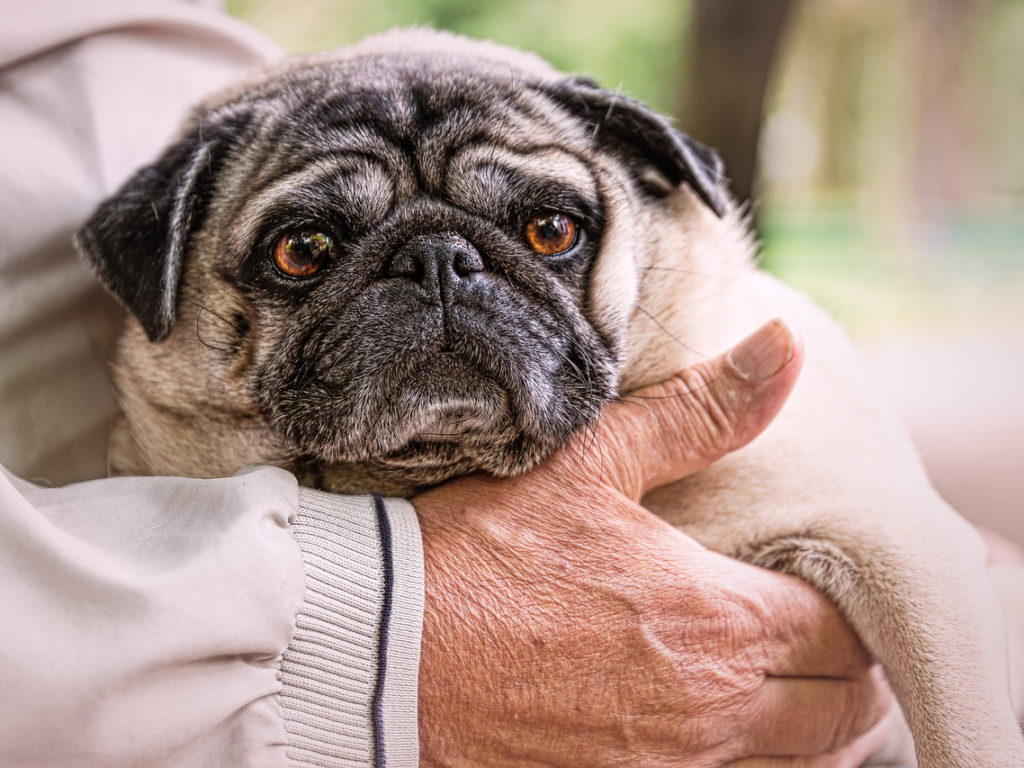Teaching An Old Dog New Tricks: Adopting Senior Dogs

The day a family adopts a new dog is exciting for everyone, as dogs get a second chance at a happy life and owners find a new best friend. For senior dogs, especially, being adopted into a comfortable home can make a world of difference for their health and happiness.
Harmony Peraza, a veterinary technician and project manager for the Texas A&M College of Veterinary Medicine & Biomedical Sciences’ Dog Aging Project, says senior dogs are often overlooked in the shelter for adoption but have the potential to make wonderful pets.
“You will be saving a life and giving a sweet companion a wonderful next chapter,” Peraza said.
Dogs are considered seniors at different age levels depending on their size. Generally, the larger the dog, the earlier they reach their senior years.
Larger breeds such as Labradors, Boxers, or German Shepherds are considered seniors around 7 years old, while smaller dogs such as Chihuahuas, Yorkshire Terriers, or Miniature Poodles are considered seniors around 8 to 9 years of age.
Because senior dogs are fully grown, their personalities are much easier to identify than those of a puppy, allowing them to be more easily paired with a compatible family.
“When adopting an older dog, it is important to discuss the details of your household with the shelter or rescue staff,” Peraza said. “This conversation is the first step in discovering which adoptees will be better matched in a household with kids or other pets.”
It is good practice to introduce new dogs to other pets, family members, and parts of the home slowly, as it can take dogs around three weeks to adjust to a new environment. It is also important that these introductions are always made under close supervision to ensure the safety of everyone involved.
“Many senior dogs have lived in homes before and may be ahead of the curve on good manners and some level of training,” Peraza said. “This possibility, combined with the calm demeanor and greater attention span of an older dog, can make them more receptive to training.”
However, because older dogs are more prone to mobility challenges, it is important for owners to be mindful of stairways or other potentially dangerous areas by using pet gates. Owners may also consider investing in pet stairs to help older dogs onto allowed furniture, as well as a pet ramp for ease in and out of the car.
Similarly, every senior dog comes with its own set of special health considerations.
“Getting your senior dog examined by a veterinarian soon after the adoption is a good idea,” Peraza said. “Because our seniors are aging more quickly than younger dogs, having a baseline for their current state of health is a great start.”
Daily exercise is crucial to a senior dog’s heath, barring any physical disabilities. The intensity of their activity should be appropriately matched with the dog’s stamina and overall condition and level of health.
“Exercise also keeps your older dog cognitively engaged and mentally sharp,” Peraza said.
With just a few extra considerations, a senior dog can provide as much joy, excitement, and love to their new family as a younger dog or puppy would. In return, you can give your new friend a loving and supportive home for their golden years.
“Older dogs have just as much ability to bond and make great memories with a new family as a puppy,” Peraza said. “Consider adopting a senior companion; they have got a great story to tell and so much love to give!”
The Dog Aging Project at Texas A&M is working to understand how genes, lifestyle, and environment influence canine health and aging through research that asks pet owners to complete surveys about their dogs. To learn more, or to enroll your dog, visit https://dogagingproject.org.
Pet Talk is a service of the College of Veterinary Medicine & Biomedical Sciences, Texas A&M University. Stories can be viewed on the web at vetmed.tamu.edu/news/pet-talk. Suggestions for future topics may be directed to vmbs-editor@tamu.edu.


